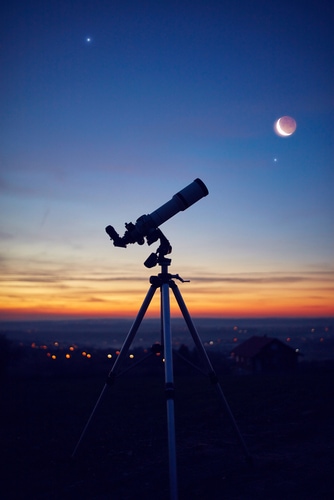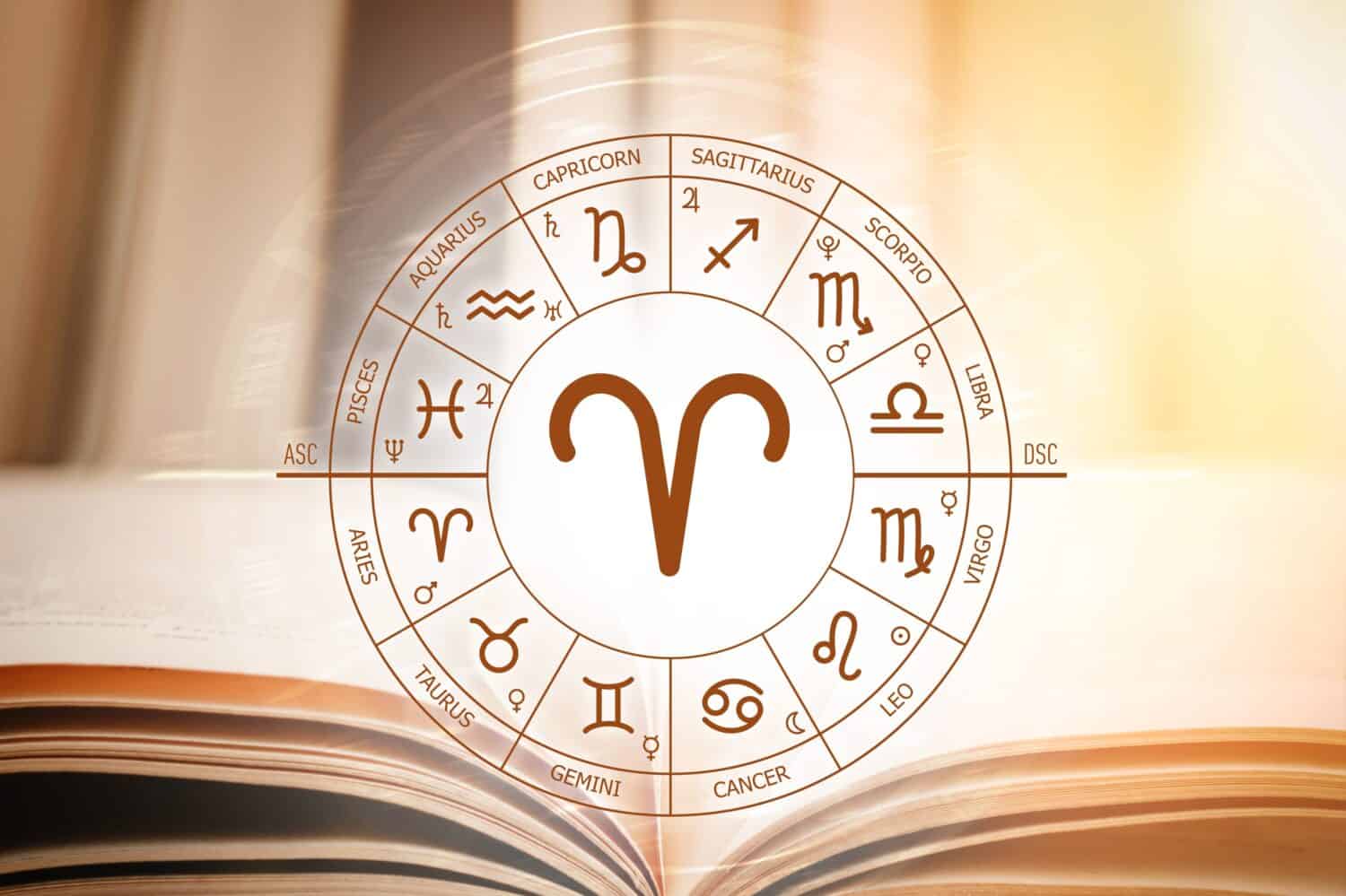The History, Goals, and Methods of Astronomy
Astronomy is the study of everything in the universe beyond Earth’s atmosphere. The objects beyond the Earth’s atmosphere include the sun, moon(s), stars, planets, tiny particles, and faraway galaxies. The first documented records of Astronomy date back to 1000 BCE from the Assyro-Babylonians. As astronomy continued to develop, it spread throughout Europe, thus creating the four subfields of astronomy.

The celestial bodies include the planets, sun, moon, stars, and the galaxy.
©Triff/Shutterstock.com
In the 17th century, astronomy was in use to record and predict the positions of the sun, moon, and planets. The studies and hypotheses astronomers have created help us better understand where and how physics works. Astronomers use telescopes to interpret radiation surrounding a particular object in space. The reason for using telescopes is that they can gather light from sources that are invisible to the naked eye. As centuries and modern science has progressed, astronauts will now visit space to study the universe around us. Astronomers track changes that can later affect Earth using the four subfields of astronomy. The four subfields are:
- Astrophysics: applying the laws of physics in space
- Astronomy: mapping celestial bodies (sun, moon, planets, stars)
- Astrogeology: examine rocks, terrains, and materials in space
- Astrobiology: searching for life outside of Earth

Telescopes are one way for astronauts or astronomers to study outer space.
©AstroStar/Shutterstock.com
The History, Goals, and Methods of Astrology
Astrology is the study of the movements and relative positions of celestial bodies interpreted as having influences on human affairs and the world. Astrology originated in Mesopotamia and later spread to India. In Greek tradition, the heavens are have twelve constellations of the zodiac. The select constellations represent these divided segments and are identified by the names of animals. In ancient China, it became a standard tradition for newborn children to have a horoscope cast to them. The way astrology works is that certain human behaviors and events are determined and predicted based on the location of the stars and planets at the time of birth.

The horoscope circle contains the zodiac symbols representing the 12 constellations.
©PeachShutterStock/Shutterstock.com
The goal of astrology is to inform an individual about the course of their life based on the position of the planets and their zodiac sign at birth. Similar to astronomy, astrology has three subdivisions. These subdivisions are:
- General: studies the relationship of the celestial moments to social groups, nations, or humanity.
- Catarchic: determines where or not a chosen moment is likely to occur due to the success of a course of action.
- Interrogatory: answers the clients’ queries based on the situation of the heavens at the time of their questions.
You may also be familiar with the astrology constellations or zodiac signs. The assignment of the signs given at birth have unique traits and qualities specific the zodiac.
| Sagittarius | 11/22-12/21 |
| Capricorn | 12/22-1/19 |
| Aquarius | 1/20-2/18 |
| Pisces | 2/19-3/20 |
| Aries | 3/21-4/19 |
| Taurus | 4/20-5/20 |
| Gemini | 5/21-6/20 |
| Cancer | 6/21-7/22 |
| Leo | 7/23-8/22 |
| Virgo | 8/23-9/22 |
| Libra | 9/23-10/22 |
| Scorpio | 10/23-11/21 |

The shapes of the constellations in the sky represent the 12 zodiac signs.
©Who is Danny/Shutterstock.com
Misconceptions of Astrology
Similar to other scientific discoveries or theories, some myths can deter individuals from not fully understanding how things work. Astrology goes deeper than understanding what your horoscope or zodiac sign is. Before accepting myths, be open-minded to understanding how a concept works. There are many misconceptions about astrology. Below are a few examples:
Myth 1: Astrology is magic or psychic activity. Many individuals believe that astrology is a make-believe theory; however, it’s based on a birth chart. The chart is designed on what the stars, planets, and universe looked like at the given moment.
Myth 2: Astrology can change the future. Astrology is a tool to avoid destruction in life and stay aligned with the universe. The idea is that if having a successful career is predicted to be in your destiny, then taking the initiative to build a strong resume and apply to jobs will increase these chances. Astrology can help guide you, but it is up to you to act on it.
Myth 3: Astrology has one branch of study. Astrology has many branches or specialties that are useful in many ways. Modern, Traditional, Vedic, and Uranian astrology are examples.
Thank you for reading! Have some feedback for us? Contact the AZ Animals editorial team.








